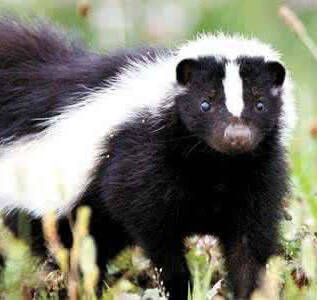
The white-necked weasel (scientific name Poecilogale albinucha) is a small carnivore. It is smaller than the honey badger. The important thing is that it has a white neck, which is very similar to the "white hair" of the honey badger. In addition, the back of the white-necked weasel is als...
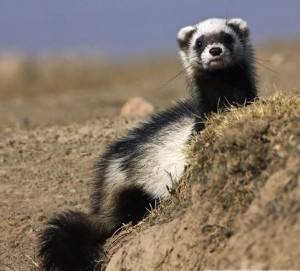
The African sagebrush (scientific name Ictonyx striatus), also known as zorille, usually lives alone and hunts at night. The African sagebrush is an aggressive and territorial animal. It usually marks its territory with feces and anal scent gland spray. The spray released by the odor glands can cove...
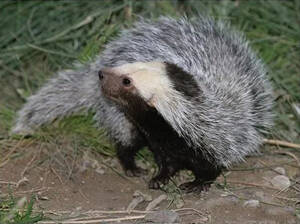
The grassland weasel (scientific name Lyncodonpatagonicus), also known as the Patagonian weasel, is a genus of the Mustelidae family in the order Carnivora, living on the Pampas in South America. Its specific habits are unknown.Local ranchers keep prairie ferrets as working pets (similar to cats and...
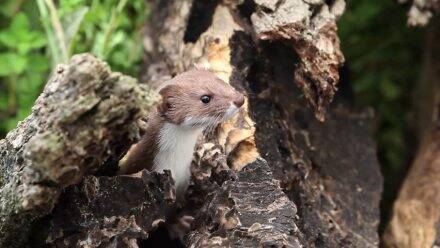
Vietnamese weasel (scientific name: Mustela tonkinensis) is called Tonkin Weasel in foreign language and is only distributed in Vietnam.Vietnamese weasel mainly forages during the day and moves quickly and agilely. Its vision, hearing and sense of smell are very sensitive. It feeds on small rodents,...
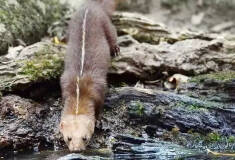
Stripe-backed Weasel (scientific name: Mustela strigidorsa) is also known as Stripe-backed Weasel or Back-striped Weasel in foreign languages. Its size and body color are similar to those of the yellow-bellied weasel, and it has no subspecies.Stripe-backed Weasel may be a diurnal species, mostly act...

Egyptian Weasel (scientific name: Mustela subpalmata), foreign name Egyptian Weasel, no subspecies.The Egyptian weasel species population is thought to have occurred in northern and eastern Israel since the Ice Age, where there are traces of more widespread populations, such as fossils found at Shaa...
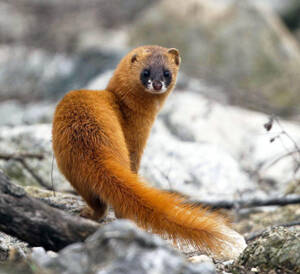
The yellow weasel (scientific name: Mustela sibirica) is also known as the Siberian Weasel. It is a small carnivore of the family Mustelidae and the class Mammalia. It has 12 subspecies and is commonly known as the yellow weasel.The yellow weasel is a nocturnal animal, especially active in the early...
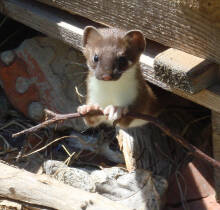
Sichuan Weasel (scientific name: Mustela russelliana) is also known as Sichuan Weasel and Lackedteeth Pygmy Weasel. It was once a subspecies of Pygmy Weasel. It was classified as an independent species in 2003 without subspecies.Sichuan Weasel is fast and agile. Vision, hearing and smell are very go...

The forest weasel (scientific name: Mustela putorius) is also known as Western Polecat and European Polecat in foreign languages. There are 7 subspecies in total.Most forest weasels are solitary creatures, prefer to live alone, and have a strong sense of territory. They act alone, appear in pairs on...
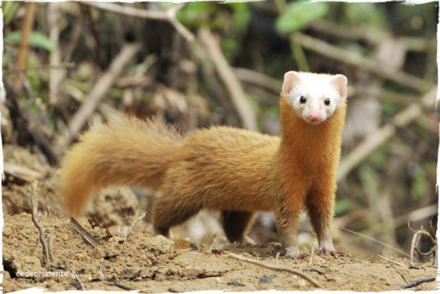
Malay Weasel (scientific name: Mustela nudipes) is also known as Malay Weasel in English. There are 2 subspecies. Specific habits are unknownListed in the 2015 Red List of Endangered Species of the World Conservation Union (IUCN) ver 3.1-Least Concern (LC).Protect wild animals and stop eating game.M...

Least Weasel (scientific name: Mustela nivalis) is also known as Least Weasel in foreign language. There are 7 subspecies.Least Weasel usually moves alone. They often go out to forage during the day. Their hunting areas are generally fixed. Unless food is extremely scarce, they will not leave their...

Black-footed ferret (scientific name: Mustela nigripes) is a small carnivorous mammal native to North America and the only mustelid native to North America, with no subspecies.Black-footed ferret is a burrowing animal. Alert, flexible, active at night. The territory is about 50 hectares. Generally a...

Indonesian Mountain Weasel (scientific name: Mustela lutreolina) Foreign name Indonesian Mountain Weasel, no subspecies.Little is known about the behavior of the Indonesian Mountain Weasel. Other weasels tend to be solitary and nocturnal, interacting only for breeding or territorial disputes. Since...
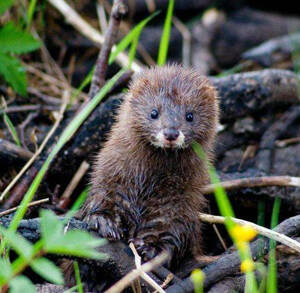
The European Mink (scientific name: Mustela lutreola) is a medium-sized mustelid with a total of 7 subspecies.The European Mink is a wanderer, occupying rivers up to 15 kilometers in length and rarely using the same cave. Females usually stay close to their dens, unless food is scarce, in which case...
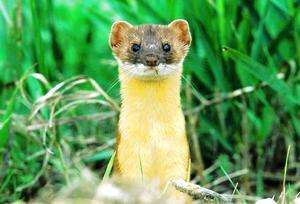
Yellow-bellied Weasel (scientific name: Mustela kathiah) is also known as Yellow-bellied Weasel in English. There are 2 subspecies.Yellow-bellied Weasel lives in caves, mainly occupying the holes of other animals as nests, and sometimes also makes nests in stone piles, cemeteries or tree holes. It r...
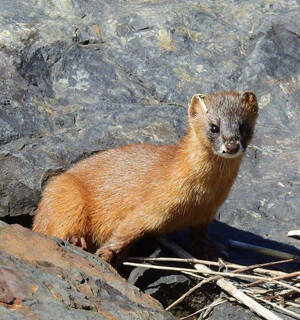
Japanese weasel (scientific name: Mustela itatsi) is a species of weasel in the family Mustela, class Mammalia, with no subspecies.Japanese weasel (Mustela itatsi) is a mammal in the family Mustela, once considered a subspecies of weasel. However, in 2011, studies of the skull morphology, body shape...
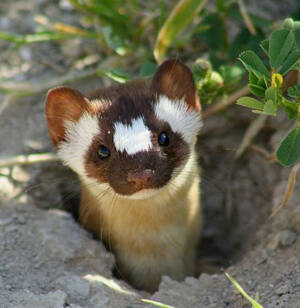
Long-tailed Weasel (scientific name: Mustela frenata) is also known as Long-tailed Weasel, Bridled Weasel, Big Stoat, and has a total of 42 subspecies.Long-tailed weasels mostly live alone except during mating season; they have sharp vision and hearing, and are quick to move. Once disturbed, they di...

Colombian Weasel (scientific name: Mustela felipei) is the second smallest carnivore in the genus Mustela.Colombian Weasel is a species that needs high conservation priority due to the threat of habitat destruction and loss. At least five field expeditions in six distribution areas in Colombia have...
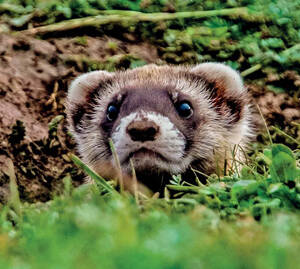
The scientific name of the mustela is Mustela eversmanii, and there are 5 subspecies.The mustela usually moves alone. It is nocturnal, but sometimes it moves during the day or at dawn and dusk. It has a fierce temperament and moves quickly. It is good at swimming and climbing. Its vision and hearing...
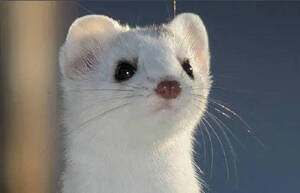
Stoat (scientific name: Mustela erminea) Stoat, Ermine, Short-tailed Weasel, there are 37 subspecies.Stoats are nocturnal animals that start to be active at dusk, but can sometimes be seen during the day. Most of their activity ranges are closely related to the activities of their prey. They general...